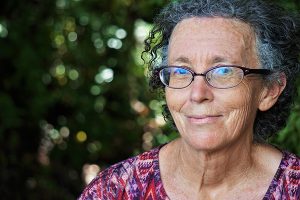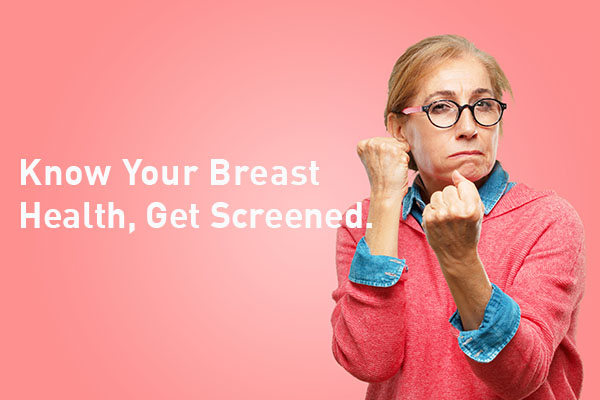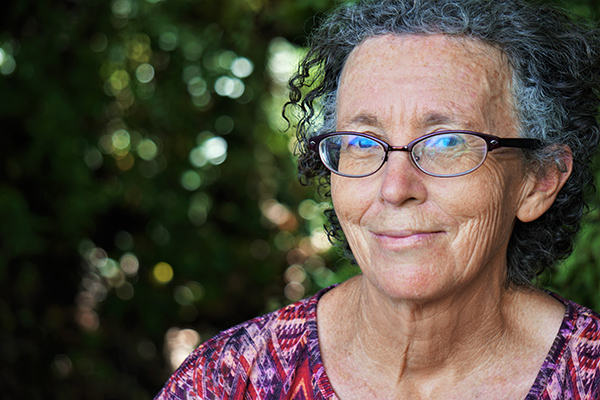A spoonful of sugar

PacMed MD gives informational insight on diabetes
An estimated 1.4 million new cases of diabetes are diagnosed in the United States annually, according to Healthline. With such staggering statistics, the importance of spreading awareness can help individuals with diabetes live full and productive lives, and in some cases, can help to prevent the onset of diabetes altogether. Here to provide a wealth of information on the topic is Pacific Medical Centers’ Internist and Diabetes Champion Lisa Oswald, MD, whose insight provides perspective on diabetic symptoms, care techniques, and the differences of Type I and Type II diabetes.
Please explain the primary differences between Type I and Type II diabetes for our readers. What are the main causes of each?
Type 1 diabetes (five percent of patients) has onset in childhood or sometime in early-mid adulthood. It is caused by a loss of the insulin-producing part of the pancreas. It may be caused by the body attacking itself or may have other causes.
Type 2 diabetes (90-95 percent of patients with diabetes have this type) is caused by the body not being able to use the insulin that our body produces very well (this is called “insulin resistance”). Eventually, there may be a lack of insulin, but normally there is plenty of naturally produced insulin that the body just can’t use properly. The causes are complicated, but genetics, being overweight, poor diet, and sometimes medications or medical conditions can all be factors of developing Type 2 diabetes.
What are some early signs and symptoms that may be indicators of diabetes?
Signs and symptoms of diabetes may include excessive thirst or urination; blurry vision; tingling in toes and/or fingers, usually of both sides; unexplained weight loss (especially in Type 1); and unexplained abdominal pain.
What advice can you offer individuals with diabetes to live the healthiest and happiest life possible?
My advice to those who are living with diabetes is to try and educate yourself as much as possible. Diabetes is a complicated and lifelong disease and you must be aware of many aspects of it. This can include talking to family/friends, taking classes (PacMed offers a series of three classes every month), reading about the topic, talking to your primary care doctor and nurse and certified diabetes educators. Additionally, you should have support to get you through this. This can include supportive people in your life, online group, medical team, etc. Lastly, it helps to know about your insurance. Sometimes diabetes medications are expensive, but you should know your options. Be sure to ask your pharmacist or primary care provider about the cost of different medications and if there are cheaper alternatives.
Military personnel are constantly on the go. What are the best practices for diabetics who are very busy?
My advice to military personnel would be to explain your average day to your primary care team and diabetes educator — be realistic about schedules for eating and taking medications. I also encourage making plans with your primary care team for days that you cannot eat for long periods or take medications at the proper time, as this will happen on occasion.
Is there anything else you would like readers to know about diabetic health and wellness?
Additional health and wellness tips I have for those who have diabetes are centered around routine lifestyle changes. Schedule a routine hour or two per week to prepare food and snacks for the upcoming week that you can grab and take with you — it doesn’t have to be perfect! Exercise is also important, so try to make time in your day to be active. This can include short bursts of activity, such as walking, taking the stairs, dancing, playing with children, etc.
What you should know about breast cancer
To close out Breast Cancer Awareness month, we reached out to a few Pacific Medical Center care providers with some important questions we could all benefit from.
According to the National Breast Cancer Foundation, on average, every two minutes a woman is diagnosed with breast cancer in the United States. Awareness matters. By being aware, we can better support each other and do what we can to maintain our own health.
Answers provided by: Dr. David M. White, Dr. Christopher Smith and Dr. Sharmila Ahmed.
When talking about breast cancer, we often put the focus on women, but it also affects men. What should people know when it comes to the ways breast cancer impacts both men and women?
Dr. White: Women with a family history, particularly with a genetic component should see their primary care physician at least 10 years before their family member’s (was diagnosed with) cancer to discuss and evaluate. Breast cancer in younger women is on the rise. Men can get breast cancer as well, and approximately 1 percent of breast cancer patients are male. Symptoms for men include breast pain; a mass; nipple changes, including discharge/blood; and breast enlargement. Men who have a family member with a genetic form of breast cancer are at an increased risk.
What advancements are happening in breast cancer treatment?
Dr. Ahmed: Treatment for breast cancer is advancing quickly. The ability to target treatment to a specific genetic mutation has now become increasingly common. Over the past few years, there have been a variety of new advancements for treatments. For advanced breast cancer with a genetic mutation — known as BRCA mutation — another new drug, Talazoparib that targets a particular pathway, was approved in October 2018.
When it comes to prevention, what do you recommend patients do to lower their risk?
Dr. Ahmed: I often get questions about how to prevent breast cancer. My response continues to be that it is important to focus on screening with mammograms and exercise. Diet may also play a role and should be rich in fruits, vegetables, fish, and olive oil. And alcohol consumption should be reduced.
How should people talk to their primary care doctors about their risk for breast cancer? What questions should they be asking?
Dr. Smith: Talk to your doctor about the best screening program for you. Women with an average risk of breast cancer — most women fall under this category — should begin yearly mammograms at age 45. Women should be able to start the screening as early as age 40, if they choose. At age 55, women should have mammograms every other year, though women who want to keep having yearly mammograms should be able to do so. Regular mammograms should continue for as long as a woman is in good health.
In your opinion, what are some of the most common misconceptions about breast cancer that people need to be aware of?
Dr. Ahmed: It is commonly thought that wearing a bra, using underarm antiperspirant, or carrying a cell phone in your bra can cause breast cancer, which is a misconception. (Another misconception is that) breast cancer always gives a sign, such as a lump, and that a mammogram is not needed.
What questions do you hear most often from your patients? And how do you answer those questions?
Dr. Ahmed: We often hear questions about treatment and the side effects. I tell my patients that side effects during treatment are variable. There are four different types of treatments, which include surgery, radiation, hormonal therapy, and chemotherapy. Surgery can cause swelling and discomfort; radiation can cause skin peeling and fatigue; hormonal therapy can cause hot flashes; and chemotherapy has the most side effects, but there are new ways to prevent side effects, including hair loss with the availability of cooling caps. Supportive medications also are given to prevent other side effects. Nowadays, most side effects are tolerated well, and many women continue to work during treatment.
Eight tips for breast cancer prevention

As you may know, 1 in 8 women are impacted by breast cancer in their lifetime, as it’s the most common cancer in American women. Knowing that this is the second leading cause of cancer death in women, treatment is most successful when breast cancer is detected early.
As part of Breast Cancer Awareness Month in October, Dr. David White, MD, FACS from Pacific Medical Centers (PacMed) offers his insight into common misconceptions, for men and women, regarding breast cancer risks, facts and signs. Additionally, he shared that PacMed follows the American Cancer Society guidelines for breast cancer.
Dr. White is a surgeon at PacMed’s Canyon Park, First Hill and Northgate clinics and shares 8 tips regarding breast cancer prevention:
- Women with a family history, particularly with a genetic component should see their primary care physician at least 10 years before the onset of the family member’s cancer to discuss and evaluate.
- Breast cancer in younger women is on the rise.
- Men can get breast cancer as well and approximately 1 percent of breast cancer patients are male. Symptoms for men include breast pain or mass, nipple changes, including discharge/blood and breast enlargement. Men who have a family member with a genetic form of breast cancer are at increased risk.
- Current treatments are focused on breast conservation when appropriate, which greatly reduces the physical and psychological challenges of surgery.
- See your physician if you have the following: breast masses or bloody/black nipple discharge. Changes in your own breasts should be taken seriously.
- Breast cancer screening guidelines are variable, so patients must discuss a breast screening plan individualized for them.
- Currently, there are many genetic associated breast cancers to scan for.
- New mammographic techniques have improved the sensitivity of mammograms.
Every Month is Breast Cancer Awareness Month

It’s smart to think about early detection in October—and all year-round. Early detection is a critical step to good breast care.
Ask your doctor about a screening plan for you.
1 in 8 women will be affected by breast cancer in their lifetime. Breast cancer occurs mainly in women, but men can get it, too.
Treatment is most successful when breast cancer is detected early. A mammogram is the single most effective method of early detection. Talk with your doctor about a screening plan that’s tailored to you.
Schedule your mammogram at PacMed.
PacMed is proud to offer the highest quality care. We have the latest technologies, like stereotactic biopsy and breast ultrasound, all delivered on-site, in a comfortable and respectful setting.
We can see you at our Diagnostic & Wellness Center for Women in Seattle or our Canyon Park clinic in Bothell. At Canyon Park, we offer Saturday mammogram appointments!
PacMed also offers a full range of Women’s Health services, including family planning, well-woman care, DXA bone density screening, da Vinci® robotic-assisted surgery and more.
Breast cancer awareness month – my burning questions to the professionals

As part of Breast Cancer Awareness Month in October, I chatted with Sharmila Ahmed, MD from Pacific Medical Centers, who answered some of my most asked questions regarding prevention, screening and treatment options for breast cancer. My maternal grandmother passed away in 1996 from her second battle with breast cancer, and my sister began her own battle in 2015 and is now a survivor!
How quickly is breast cancer technology and treatment advancing?
- Treatment for breast cancer is advancing quickly. And screening has improved too! We now have digital breast cancer screening available compared to only routine mammograms.
- For example, we have digital breast scanning known as three-dimensional mammography. Studies show that using this technology can result in a 41 percent increase in the detection of invasive cancer, a 15 percent decrease in recall rates and a 29 percent increase in the detection of all breast cancers. This is available at Pacific Medical Centers and is particularly helpful for women with dense breasts.
- The ability to target treatment to a specific genetic mutation has now become increasingly common.
- Over the past few years there have been a variety of new advancements for treatments. For advanced breast cancer with a genetic mutation known as BRCA mutation, another new drug Talazoparib that targets a particular pathway was approved in October 2018.
What are the survival rates now, and how does that compared to five or ten years ago?
- Based on data from the American Cancer Society it is shown that women with localized breast cancer now have a 99 percent survival rate based on women diagnosed with breast cancer between 2008 and 2014. This is an improvement from survival rates from the 1990s.
- While breast cancer mortality has dropped dramatically since the 1980s, it is thought that improvements in breast cancer treatment are more likely responsible for this reduction in mortality than screening.
What are some of the misconceptions that still linger regarding breast cancer for men and women?
Common misconceptions regarding breast cancer include:
- That only women can develop breast cancer
- You need a family history of breast cancer to get breast cancer
- There are no behaviors or preventative methods to reduce the risk of breast cancer
- Wearing a bra, using underarm antiperspirant, or carrying a cell phone in your bra can cause breast cancer
- Breast cancer always gives a sign such as a lump and that a mammogram is not needed
Knowing that men can get breast cancer too, what is the screening process like for men?
- The screening process for a male is a physical exam. If a lump is detected, it should be followed by a mammogram and a biopsy may also need to be performed.
What are some of the most common questions patients ask you?
- I often get questions about how to prevent breast cancer. My response continues to be that it is important to focus on screening with mammograms and exercise. Diet may also play a role and should be rich in fruits, vegetables, fish and olive oil and alcohol consumption should be reduced.
Knowing that every patient experiences something different while going through treatment, what can someone typically expect (I.E. chemo side effects, etc.)?
- Side effects during treatment are variable. There are four different types of treatments which include surgery, radiation, hormonal therapy and chemotherapy.
- Surgery can cause swelling and discomfort
- Radiation can cause skin peeling and fatigue
- Hormonal therapy can cause hot flashes
- Chemotherapy has the most side effects, but there are newer ways to prevent side effects including hair loss with the availability of cooling caps. Supportive medications are given to prevent other side effects.
Nowadays, most side effects are tolerated well, and many women continue to work during treatment.
What are your thoughts on engaging in ancient methods of medicine (acupuncture, etc.) while going through chemotherapy?
- Acupuncture and massage therapy are helpful for women with breast cancer who are having symptoms of swelling or discomfort. The most recent data shows that acupuncture can reduce the side effects of joint pain caused by aromatase inhibitors drugs.
- Massage therapy is now frequently used after surgery to help patients recover.
What are the current thoughts behind monthly self-breast exams and yearly mammograms? Is this still the best way for early detection?
- The best method for screening women is using a mammogram. We no longer suggest self-breast examinations, as this has been proven to be less effective than mammograms.
- Mammographic scans can be done every one-to-two years depending on each individual’s risk level, group and age. Talk to your doctor to find the right screening program for you.
- PacMed follows the American Cancer Society’s guidelines for breast cancer screening.
Can mammograms come back negative but then also turn out to be something of concern later?
- Unfortunately, mammograms are not perfect and are limited, so it is important to follow-up on symptoms and to repeat testing or do additional evaluations.
How should people handle negative results and keep this in mind for future screenings?
- Having a normal or negative mammogram can be concerning. However, it is important to follow up and continue to participate in screenings to reduce the risk of breast cancer. Approximately 230,480 American women are diagnosed with breast cancer annually, so we all know someone who has breast cancer.
- The majority of breast cancers in the United States are diagnosed as a result of an abnormal screening study, although a significant number are first brought to attention by a patient.
Dr. Sharmila Ahmed is a Cardiologist at PacMed.
Culture + wellness: Feel-good October
 As part of October’s Breast Cancer Awareness Month, Pacific Medical Centers is spreading knowledge about the most common cancer in American women—and the second leading cause of cancer death in women. One in eight women is impacted in her lifetime, and treatment is most successful when breast cancer is detected early. Two healthcare providers offer insight into their recommendations and screening advice. (Pacific Medical Centers offers a full suite of diagnostic imaging services.)
As part of October’s Breast Cancer Awareness Month, Pacific Medical Centers is spreading knowledge about the most common cancer in American women—and the second leading cause of cancer death in women. One in eight women is impacted in her lifetime, and treatment is most successful when breast cancer is detected early. Two healthcare providers offer insight into their recommendations and screening advice. (Pacific Medical Centers offers a full suite of diagnostic imaging services.)
Dr. Christopher Smith, MD, FACP explains that women at high risk – because of family history, a breast condition or another medical reason – may need to begin screening earlier and/or more often. Dr. Smith encourages everyone to “talk to your medical provider to be sure about when to start screening.” He also shared that PacMed follows the American Cancer Society guidelines for breast cancer screening.
Dr. Smith’s (Medical Director of Quality and Primary Care Physician) insights for women at average risk for breast cancer:
- Women with an average risk of breast cancer – most women fall under this category – should begin yearly mammograms at age 45.
- Women should be able to start the screening as early as age 40, if they choose.
- At age 55, women should have mammograms every other year – though women who want to keep having yearly mammograms should be able to do so.
- Regular mammograms should continue for as long as a woman is in good health.
- Talk to your doctor about the best screening program for you.
Additionally, Dr. Gurpreet Dhillon, MD shares that the goal of digital mammography is early detection, which reduces deaths, extends life expectancy and improves quality of life. “Screening mammograms have reduced the mortality rate from breast cancer by one third while also enabling less surgery, fewer mastectomies and less frequent or aggressive chemotherapy,” Dr. Dhillon said.
Dr. Dhillon’s (Radiology Physician) insights on 2D vs 3D mammography:
- 3D mammography acquires multiple images of the breast at different angles and allows radiologists to see around overlapping structures.
- When women have mammograms and an abnormal finding is detected, they will be called back for additional imaging. Because 3D imaging eliminates most summation artifacts—or overlapping breast tissue that can resemble cancer—that can often show up on 2D imaging, this results in fewer women being called back.
- Additionally, fewer patients will experience short-term anxiety waiting for their second test results.
- 3D mammography lowers recall rate and has higher cancer detection rates over 2D mammography.
- 3D mammography offers a 41 percent increase in detection of invasive cancer and a 49 percent increase in positive predictive value.
LWA: New cooking demo
 The Living Well Alliance has a new cooking video! Next time you need a fast, delicious and healthy meal, try our Vegetarian Peanut Bowl. It pairs colorful vegetables with buckwheat noodles and homemade peanut sauce.
The Living Well Alliance has a new cooking video! Next time you need a fast, delicious and healthy meal, try our Vegetarian Peanut Bowl. It pairs colorful vegetables with buckwheat noodles and homemade peanut sauce.
Video and recipe for Vegetarian Peanut Bowl
The Living Well Alliance is run by Pacific Medical Centers. Call us today at 206.621.4419 for more information or email LivingWellAlliance@pacmed.org.
Recipe: Baked apple with oat crumble
 Warm apples and a crispy topping make this a comforting fall dessert. Leave the skin on the apples for a dose of fiber, and serve with a small scoop of vanilla yogurt, if desired.
Warm apples and a crispy topping make this a comforting fall dessert. Leave the skin on the apples for a dose of fiber, and serve with a small scoop of vanilla yogurt, if desired.
Nutrition: Strategies for picky eaters
 We’ve all seen a child crinkle their nose when served beets or stew! Helping a child become a happy, healthy eater takes patience and thoughtful attention. If you’re a parent or caregiver, keep in mind who is responsible for what:
We’ve all seen a child crinkle their nose when served beets or stew! Helping a child become a happy, healthy eater takes patience and thoughtful attention. If you’re a parent or caregiver, keep in mind who is responsible for what:
- The parent is responsible for what, when and where.
- The child is responsible for how much and whether they eat.
This means that you choose and prepare foods, provide regular meals and snacks, and demonstrate how to behave when eating. You are in charge of making mealtimes pleasant, and letting your child grow into the body that’s right for them.
Children have a natural ability to eat as much as they need, and to stop when they’re full. So you can trust your child to eat the amount they need, and ease up on prodding them.
To help your child feel relaxed about meals and even confident in exploring new flavors, try these three tips:
Create a pre-meal routine
It can involve putting away toys, washing hands, a prayer or a song. Transitions may be hard for kids, and a routine helps everyone get ready for a meal in a calming and predictable way.
Involve your child in setting up meals
Help your child learn about preparing and cooking foods. You can offer simple tasks like tearing lettuce or mixing ingredients, or suggest something that avoids close contact with foods like setting the table, inviting sister and dad to the table or pouring water for everyone.
Eat as a family
Aim to make the dinner table the happiest spot in your house. Children will want to be there and feel privileged to be to participate in family meals. Eating with the family allows kids to model adult behavior around trying new foods and learning manners.
Finally, be considerate of your child’s preferences—but ultimately, remember the division of responsibility: you choose what is being offered, and the child decides if they want to eat it. Have the child help plan meals by requesting foods before grocery shopping or meal prep. Or ask them to choose between two items you were already planning to serve.
For more information on healthy, positive eating, visit The Ellyn Satter Institute. Looking for a pediatrician or dietitian who can give advice geared to your little one? Make an appointment with a PacMed pediatrician, family medicine doctor or dietitian. Happy eating!
Ask PacMed

Patients often ask…“I’m turning 65 next year. What do I need to know about Medicare?”
—answered by Linda Marzano, RN, MHA, Chief Executive Officer
Medicare is a great program, but it’s different from the commercial insurance you might be used to. You need to apply for Medicare within three months either side of turning 65—or you can’t join until the next enrollment period, and you’ll pay a penalty.
Basic Medicare includes Part A for hospital stays and Part B for outpatient services. Most people get Part A for free and pay a monthly premium for Part B. You can optionally add Part D for prescription drug coverage.
It’s important to remember, Medicare alone won’t cover all your health care costs. Medicare pays only 80% of items it covers, and it doesn’t cover long-term care, eyeglasses, dental care, hearing aids or extra perks.
To cover some of these extras, you have two options to add to Medicare:
- A Medicare supplement known as Medigap. This pays the extra 20%—only for services that Medicare covers. You’ll pay an extra premium for a Medigap policy.
- Medicare Advantage. These plans may cover vision, dental, hearing aids and long-term care, along with other perks like gym memberships, massage or acupuncture. However, you will likely still pay a portion of the extra 20% for covered services with Medicare Advantage. Some of these plans charge a premium and others do not.
You can’t have both Medigap and Medicare Advantage; you have to choose one or the other.
For help with your individual situation, PacMed offers free services, including Medicare information sessions and a hotline where you can ask questions or schedule a consultation. Just call 1.877.315.3279.
Health care decisions are important for your quality of life as you age. Please let us know if we can help.












